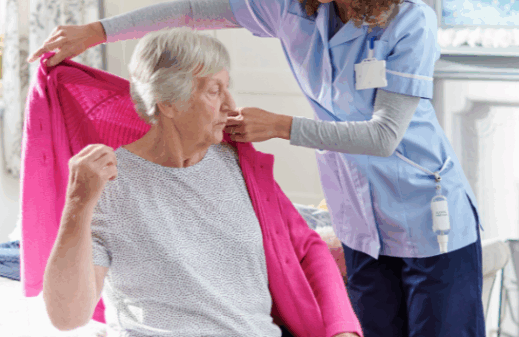The amount of sunshine we get throughout the day has a significant impact on both our sleep patterns and our overall mood. Specifically, in the late fall and winter months, seasonal affective disorder has a strong impact on our day-to-day activities. For many, spending more time outside and exercising more often is a good start. However, for personal care assisted living facilities, alternative methods of providing light therapy may be necessary to effectively treat and improve mood and sleep. This article discusses what light therapy accomplishes and some techniques to implement for residents.
What is Light Therapy?
Light therapy or Bright Light Therapy (BLT) is one of the most common therapeutic methods for treating symptoms of seasonal affective disorder. Typically, patients are exposed to administered levels of bright white light which increases their daily exposure to light. The goal of treatment is to aid in alleviating symptoms of depression and improving sleep patterns.
BLT is typically performed for a few hours in the morning and a few hours before bed depending on the patient. The most common device used is a light box. This light box is used to simulate levels of light found at both dawn and dusk. For personal care assisted living facilities, the potential impact of using bright light therapy is high.
Impact on Mood
Bright light therapy has shown to have a clinical impact on treating different mood disorders.
BLT has had the greatest impact on patients with seasonal affective disorder (SAD). With decades of clinical studies proving its effects on treating SAD, BLT is seen as first-line treatment. According to the Jama Network, a study conducted by Eastman et al. showed the majority of patients treated with BLT reached depression symptom remission. The study concluded that 61% of patients in the study achieved remission compared to 32% of patients in the placebo group.
In addition to SAD, bright light therapy is being studied for its clinical effects on non-seasonal depression. According to the National Institute of Health, three randomized trials sponsored by the American Psychiatric Association contained several important findings:
- Use of BLT alone showed a significant reduction in non-seasonal depressive symptoms
- BLT had a similar affect to pharmacotherapy trials on depression remission
- BLT in conjunction with antidepressants led to a greater improvement in patients compared to use of antidepressants alone
Further, BLT has been studied in the treatment of bipolar depression. According to Science Direct, a meta-analysis study concluded that patients treated with a combination of monotherapy and total sleep deprivation (TSD) experienced decreased disease severity when treated with BLT.
Although these studies on mood disorders have been conclusive for effectiveness, the mechanism for BLT is being further studied to determine appropriate levels of exposure to light.
Impact on Sleep
Bright light therapy has also had a significant impact on sleep patterns of patients.
Use of BLT has shown to impact a patient’s circadian rhythm. As a result, patients have an easier time falling asleep at night or can sleep further into the morning, positively impacting their sleep schedule.
According to the National Library of Medicine, a meta-analysis of 53 studies examined impacts of BLT on insomnia and circadian rhythm-related sleep disorders. In the end, BLT was found to have a positive effect on sleep patterns for those with these disorders as well as those suffering from Alzheimer’s and dementia.
Ultimately, BLT has a positive impact on the sleep patterns of patients. However, studies are ongoing to determine the appropriate level of light exposure needed to achieve a more significant effect on patients with sleep disorders.
Techniques to Implement for Your Residents
Treating residents with bright light therapy may have important impacts on mood and sleep. The Mayo Clinic recommends providing exposure of 10,000 lux of light with as little UV light as possible, with the following protocols:
- Use within the first hour of waking up in the morning
- Use for 20-30 minutes
- Use 16-24 inches from the face, being sure to follow manufacturer’s instructions
- Use with eyes open, but patient should NO look directly at the light
Before administering BLT, consider consulting with the resident’s health care provider. Make sure they are aware of any eye problems such as glaucoma or cataracts before therapy begins. Your resident’s health care provider may recommend a specific light box depending on the individual.
Of course, your team does everything possible to keep residents comfortable and happy. Adding bright light therapy may be one more way you can achieve those goals.
How to Use Light Therapy to Positively Impact Mood and Sleep
https://www.tangramins.com/how-to-use-light-therapy-to-positively-impact-mood-and-sleep/




